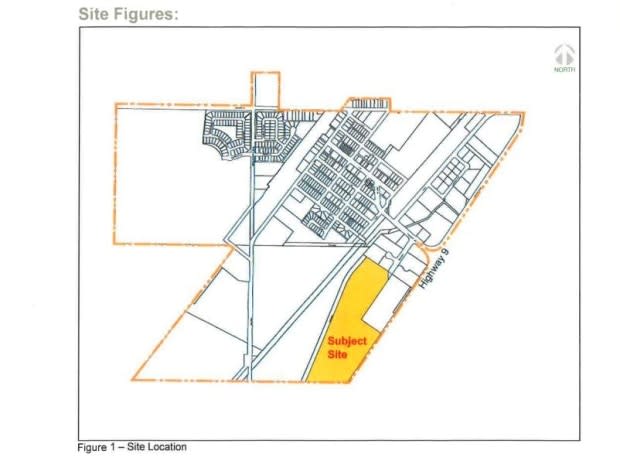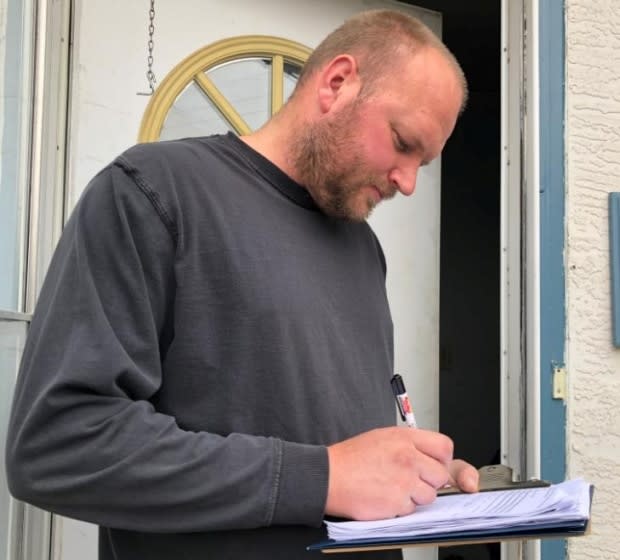Proposed medical waste incinerator worries residents of southern Alberta county
Update, Oct. 16: Beiseker council has tabled its vote on the land use bylaw for the incinerator to Nov. 12.
The original article appears below.
A group of concerned Rocky View County residents say they want more consultation over a proposal to build a nearby medical waste incinerator.
"It's something that could greatly affect our lives … I think that's what people are feeling so upset by, was the fact is, why is this timeline so rushed?" said Jennifer Ladrillo, who lives in Irricana, Alta., about 10 kilometres southwest of Beiseker.
Beiseker council is set to hold a public hearing on the proposal to build the medical waste incinerator on Tuesday evening, immediately followed by second and third readings of the proposal and a vote on whether or not to amend the land use bylaw for the site.
CBC News reached out to Beiseker Mayor Warren Wise, who said he would not speak to media until after the public hearing.
The incinerator, which would be located on the south side of the village along Highway 9, would destroy about 8,000 tonnes of biomedical waste per year.
That includes human tissue and organs, medical equipment, laboratory materials that have come in contact with blood or bodily fluids, syringes and scalpel blades, as well as other items like out-of-date prescription drugs.
I don't feel they were armed to really answer the kind of questions people are really concerned about. - Jennifer Ladrillo, Irricana resident.
The project would create 22 full-time jobs, as well as contractor work, and provide much-needed tax revenue to the village, which has a nearly $160,000 deficit.
Ladrillo learned of the proposal through an article in her local paper just weeks ago, on Sept. 16, and attended an information session held by the company behind the project, G-M Pearson, a few days later.
As a biochemist by trade and as a concerned mom, she came to that session with plenty of questions.
But she was disappointed when the only expert in attendance was a geologist, when she said she would have preferred to speak to an air quality specialist or someone who could speak more directly to the health impacts.
"I don't feel they were armed to really answer the kind of questions people are really concerned about, mainly the health and safety of our agriculture, our farm animals and, you know, ourselves and our children."

Mike Fournier, project manager with G-M Pearson, said the company is simply at the first stage of a long process, which will require multiple environmental and health assessments before the project can be built.
"We wanted to get ahead of the rumour mill, and explain who we were, what the project was about — covered at a general level — and put people's minds at ease that this isn't an approved project," Fournier said.
We think we have a very safe project, but we also recognize it's going to take a lot of effort to demonstrate that. - Mike Fournier, G-M Pearson
"We're really at step one of a four or five step process that's going to take multiple years with significant engagement with the community, including subject experts in … the assessment of human health risks."
Fournier said after the land-use bylaw hearing, the development permit will trigger a provincial environmental review process and only once that is complete can the company proceed with construction.
He said lessons were learned from the company's first application to build the plant in Ryley, Alta.: "get involved with the community early, be open and transparent, and provide as much information as we can."
That plan fell through after the county denied the development permit, saying the site had insufficient infrastructure and water to service the proposed plant.
Health study expected to find low risks, company says
Fournier provided CBC News with a human health impact analysis for the Ryley proposal, which he said forms the starting point for the Beiseker proposal — but he expects an analysis of the new site will have similar results.
The analysis, completed by Warren Kindzierski, an associate professor of environmental health sciences at the University of Alberta, states that while older studies about older incineration facilities do suggest evidence of health impacts to people who live near waste incinerators, recent studies suggest modern facilities don't pose the same risk.
"Public concern about health risks is not justified for potential exposure to dioxins and furans and other chemical substances that are emitted by modern, well-run incinerators equipped with modern pollution control technologies," the analysis reads.

It said the potential exposure of dioxins and furans — toxic chemicals that are found in very small amounts in the environment — would be 0.0043 picograms per kilogram of body weight per day, below the level Health Canada considers to be a "tolerable" daily exposure of 2.3 picograms per kilogram of body weight per day.
For comparison, studies done in the late '90s in two Canadian cities showed the average person consumed about 0.62 picograms per kilogram of body weight per day just by eating grocery store food, according to Health Canada.
A picogram is one-trillionth of a gram.
"We think we have a very safe project, but we also recognize it's going to take a lot of effort to demonstrate that," said Fournier.
Ladrillo says she still has concerns — especially because dioxins and furans can be bioaccumulative, meaning they can build up in the environment or in your body over time.
She also pointed to fines G-M Pearson received for exceeding emission limits at the now-closed Wainwright medical waste incineration facility it operated and for filing late emission reports between 2007 and 2009. The aging facility was closed in 2015 by the municipality after it failed safe emission tests.
"So many of us just want this [land use amendment] not to get approved, because that would just stop it in its tracks altogether," Ladrillo said.
Beiseker is located approximately 70 kilometres northeast of Calgary.


